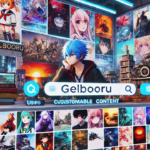Introduction: What is Đeman?
The term “Đeman” might sound mysterious to many, especially outside the regions where it’s more commonly referenced. Depending on the cultural and linguistic context, Đeman could refer to mythical figures, spiritual entities, or even symbolic archetypes embedded in folklore, literature, or religious traditions. Often used in Slavic and Balkan cultures, the word Đeman (or its variations like “Džin,” “Demon,” or “Đavo”) has been shaped by centuries of oral storytelling, ancient beliefs, and modern reinterpretations.
Though the term may loosely be associated with “demon” in English, its deeper meanings are nuanced and layered. It’s not always about evil or malicious spirits—it can also represent raw forces of nature, misunderstood protectors, or metaphysical guardians. In this article, we will dig deep into the origins, folklore, symbolism, and contemporary relevance of Đeman, tracing its journey through cultures, time, and imagination.
Historical Origins: Tracing Đeman Through Time
The word “Đeman” is believed to have evolved from ancient languages and oral traditions passed down through generations. In many Slavic tongues, including Serbian, Bosnian, and Croatian, it shares linguistic roots with Arabic “jinn” and Latin “daemon,” reflecting a blend of Eastern and Western influence.
Historically, Đeman was seen not just as a harbinger of chaos or evil, but also as a force to be reckoned with—something that commanded respect. In pre-Christian pagan beliefs, Đemani (plural) might have represented the untamed wilderness, the unknown aspects of life, or even the dual nature of humanity itself. They weren’t strictly evil—they embodied duality: danger and protection, destruction and creation, fear and awe.
By the time Christianity spread across the Balkans and surrounding regions, Đeman began to take on a more negative tone, slowly aligning with the concept of demons or devils. However, even during the religious transition, old tales lingered—keeping the cultural memory of Đeman alive in village legends, superstitions, and bedtime stories.
Folklore and Mythology: The Role of Đeman in Cultural Stories
In Balkan and Slavic folklore, Đeman is often a shapeshifter—a creature that walks between worlds. Sometimes human, sometimes animal, and other times entirely spirit, these beings serve as cautionary figures or tricksters in local myths.
Take for example the legend of the Midnight Đeman—a spirit who roams forests under the moonlight, leading lost travelers further into the woods. In some stories, the Midnight Đeman is cruel and relentless, punishing those who disrespect nature. In others, it appears to offer strange guidance, revealing hidden truths or secrets only when a traveler is truly desperate or humble.
There are also lighter, even humorous interpretations. In village tales, Đeman might be blamed for misplaced tools, broken pottery, or mysteriously spoiled food. “It must’ve been the Đeman,” people would say, half-joking, half-believing. These tales allowed communities to process fear, misfortune, and the unexplained, all while weaving a rich web of shared narratives.
Children growing up in such regions might have heard warnings like, “Don’t go near the old well at night, or the Đeman will get you,” reinforcing safe behavior through imaginative storytelling.
Symbolism and Archetypes: What Does Đeman Represent?
Beyond the literal myth, Đeman carries powerful symbolism. On a psychological and philosophical level, it can represent inner turmoil, temptation, the shadow self, and the battle between instinct and morality. Carl Jung, a Swiss psychiatrist known for exploring archetypes, might describe Đeman as a projection of the “shadow”—the hidden, darker aspects of ourselves we fear or suppress.
In literature and art, Đeman frequently appears as a complex antagonist. They’re not purely evil but rather misunderstood—driven by motives that often challenge the protagonist’s growth. This layered depiction gives them a lasting presence across books, plays, and films in Balkan, Middle Eastern, and even Western traditions.
Some modern scholars also interpret Đeman as a cultural scapegoat, a figure onto whom communities could project fears, social tensions, or moral uncertainties. During difficult historical periods—plague, war, or famine—Đemani might have been imagined or invoked as a way to rationalize suffering and create a narrative framework around chaos.
Đeman in Modern Pop Culture and Media
Despite its ancient origins, Đeman is far from forgotten. In fact, modern storytelling has given it new life in various forms. You’ll find echoes of Đeman in dark fantasy novels, horror films, video games, and even music. These modern appearances often lean heavily into the mystical or gothic aesthetic, adding visual flair to an already enigmatic figure.
For instance, indie games and comics inspired by Balkan mythology sometimes feature Đeman-like characters as guardians of forbidden knowledge, keepers of cursed objects, or lost souls caught between life and death. These portrayals keep the legend alive for younger audiences, blending traditional storytelling with interactive entertainment.
In urban fantasy fiction, Đeman often appears as a morally gray figure—neither villain nor hero. This shift reflects modern society’s growing understanding of nuance and the rejection of black-and-white morality. As readers and viewers, we now appreciate complex characters that challenge our assumptions, and Đeman fits right into that space.
Even in visual arts, especially tattoo design or digital art, Đeman-inspired figures showcase a dramatic blend of horns, shadowy cloaks, glowing eyes, and surreal backdrops. Artists reinterpret these symbols through their unique lens, giving Đeman a timeless yet ever-changing image.
Cultural Beliefs and Superstitions Today
Despite modernization, belief in Đeman—or at least a lingering cultural awareness—still persists in many communities. Older generations continue to pass down tales, while younger generations often blend old beliefs with humor or reinterpretation.
In some rural areas, traditional rituals are still practiced to “ward off” Đeman-like spirits. These may include burning sage, hanging garlic, or reciting protective prayers. Whether these acts are based on belief or tradition, they serve a communal purpose, helping people feel connected to their heritage.
Interestingly, some spiritualists and alternative healers have reinterpreted Đeman not as evil but as an energy imbalance—something that can be harmonized or transformed. In this view, Đeman becomes a symbol of healing, spiritual awakening, and confronting personal demons—very different from its old fearful image.
And let’s not forget the internet. Social media is filled with memes, story threads, and jokes about Đeman, often drawing on a shared cultural memory. This modern twist keeps the tradition alive in an entirely new format.
Conclusion: Why Đeman Still Matters
The enduring legacy of Đeman reminds us of how powerful and flexible mythology can be. From its roots in ancient storytelling to its evolution through religion, art, and modern entertainment, Đeman has become more than a myth—it’s a cultural mirror.
Whether you view Đeman as a creature of darkness, a misunderstood spirit, or a metaphor for internal conflict, its relevance today speaks to something deeply human. We all wrestle with fears, question the unknown, and seek meaning in the things we can’t control. Đeman, in all its forms, gives those questions shape.


